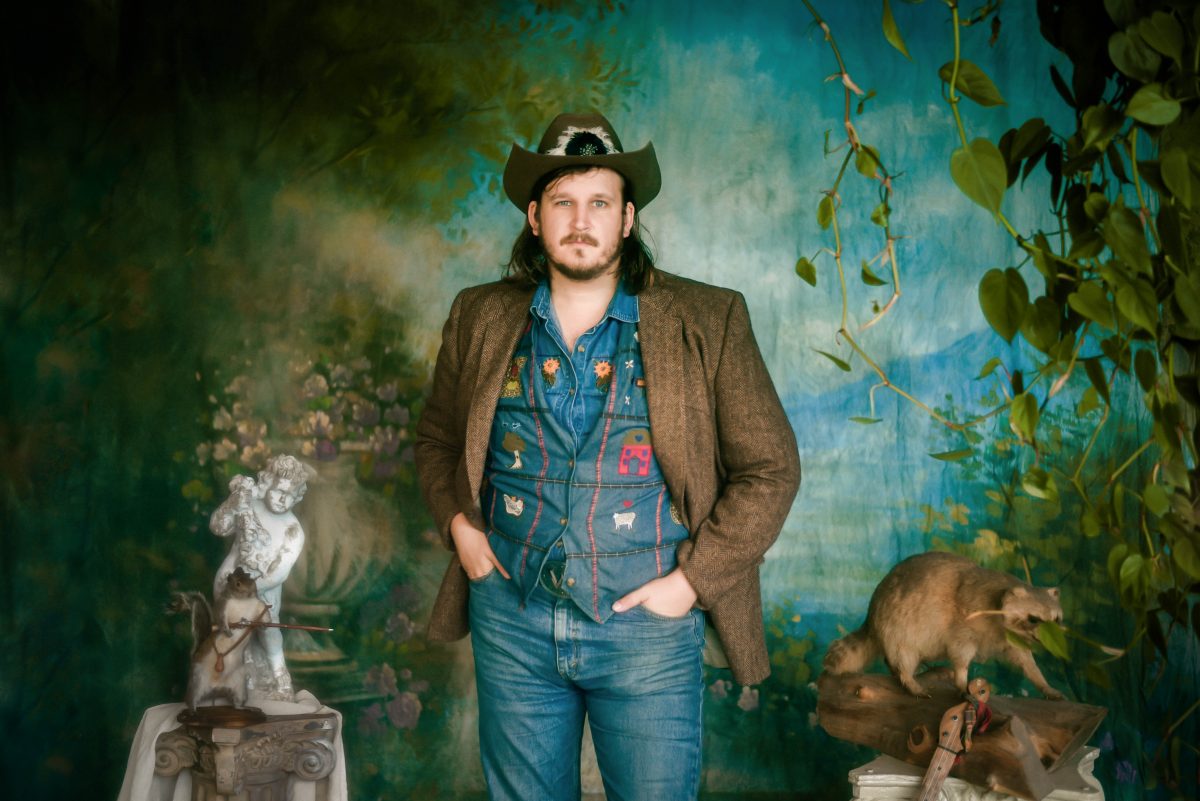By Thomas Crone
Willi Carlisle has a healthy respect for the past, modeling his career, in part, on the folksingers of the 1950s, ’60s, and ’70s—people who traveled a self-made circuit of coffeehouses, clubs, and theaters that catered to a hip set.
Pete Seeger, in particular, is someone who Carlisle feels kinship toward, though he also looks to contemporary performers for guidance as well, like Tyler Childers, and mid-career, touring lifers like Hayes Carll. But the musician’s interests go back even farther, as evidenced by his collection of banjos that date back to the 1850s. So, yeah, he digs what’s come before. But he’s also a curiously “now” kinda guy.
One of Carlisle’s modern moves is in the making of the title video for his new album Critterland. He posted a note to Facebook, suggesting that he was looking for someone to create a stop-motion animation video that would capture the mood of the album’s cover, while reflecting the song’s lyrics. The feedback was immediate, useful, and employed.
“I just asked the world of the internet, ‘Do you know any animators?’” says Carlisle. “And out of the hundreds of bots that also responded, there were two people who reached out, who do exactly that kind of animation, one of whom said she’d love to do it. So, as the weeks tore on, I hired a friend (who’s a really good fiddle player), Julie Bates, to make the video. Julie, to her credit, works on a mid-2010s MacBook with a camera that’s 20 years old and she does it all by hand.”
Bates’ independent style is such that there “was no asking ‘Can you bring up the lighting there a little bit?’ What’s done was done,” he says. “And that’s more pure and interesting to me. Higher stakes, more fun.”
Again, it was a blending of times, influences, styles of working, ways to reach a collaborator.
And speed’s a part of it too. Carlisle says Critterland was recorded in three days, “with no take-backs.” It’s the kind of record that reflects his musical roots, based in the folk and country idioms of states like Arkansas, Missouri, Kansas, and Illinois, places where he’s hung his hat over the years. It is also the kind of thoughtful, unique record that has potential to break the artist to a wider audience. Yet, with his career in ascendance, Carlisle is not thinking in the context of an annual calendar, or an album cycle, or a tour itinerary. The musician says he prefers to break things down to the smallest fraction possible.
“I wake up every day, work the hardest I possibly can,” he says. “If it doesn’t all work out, I can try again tomorrow. Some day, some type of clarity of organization may come to me.
“Meaningful encounters with people really drive my writing,” says Carlisle. “I love to practice and I love to play. The only things that kill me are publicity and logistics. Like, I have to go to the post office today. Pretty much everything else, I like. I haven’t had to plan too much as I’ve worked with people who I simply tell, ‘Hey, guys, I’m ready.’ And it always works.”
It’s worked to the point that Carlisle’s heading into his biggest year of touring yet. Maybe there was a year with more dates on the books; he’s known to be on the road for 80 to 90 percent of his days, making home a relative term. This year, though, the dates range from his usual club and festival appearances to some support slots for Childers, where five-figure audiences will be the rule.
For someone who came up playing house shows, folk halls, and corner taverns, the jump’s been wild and kind of awesome. Carlisle arrives at this moment through hard work—putting out a quarterly zine, producing videos for pennies on the dollar, and playing for all the cool online channels that’ll have him.
Now when he looks out at an audience, he realizes there are a lot more people looking back than in the recent past. “This year we’ll be doing some opening dates in stadiums for 20,000 people and more,” he says. “That exponential growth has been an honor and a pleasure. But the shows haven’t changed much between doing them for 50 people or just 10 people or 20,000. It shouldn’t. It’s my job to give my all and that hasn’t changed very much.”
Carlisle pauses. “Maybe I tell a dirtier joke in a smaller room,” he says. “But that’s about it.”
